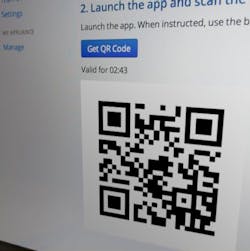Manufacturers’ expanding use of cloud services, as well as their exploration into BYOD, were big news in 2013. In both cases, a great deal of debate over the best approach to these two data access tactics continues.
For BYOD, the discussion continues to center on both the fairness to the employee and the corporate IT structure and policies required to support it. As for the cloud, there still seems to be some reticence on the part of many manufacturers to put their private corporate data onto a public cloud.
Given the continuing concern over cloud security, AeroFS has introduced a new technology approach that allows employees to use their own devices to access work data via a private cloud. What’s interesting about AeroFS’s approach is its release of an iOS app that sidesteps the manual entry of hostnames, ports, and security certificates to access data. The AeroFS iOS app uses a QR code to manage access.
AeroFS cloud services are deployed behind a corporate firewall rather than a public cloud. In this structure, files are shared directly between devices and are reportedly protected end-to-end in transit with AES 256-bit encryption.
According to AeroFS, use of the QR code for access “simplifies IT administration overhead by keeping the on-boarding flow for employees simple. Employees, in turn, get to experience the same ‘one-click’ install process they [get] from the AeroFS Desktop apps, completely on their mobile platform.”
The app displays the same folder hierarchy users see on the work desktops, allowing users to view and download whichever files they need.
An article appearing in the Wall Street Journal’s Venture Capital Dispatch blog says AeroFS has already also won some large corporate customers, including a financial services firm in New York that has signed up for 1,000 seats.
AeroFS co-founder and chief executive Yuri Sagalov said in the WSJ article that he believes media stories generated by former NSA contractor Edward Snowden on how the NSA secretly monitors and captures data have reinforced customers’ desire to use something like AeroFS.
About the Author
David Greenfield, editor in chief
Editor in Chief

Leaders relevant to this article:
